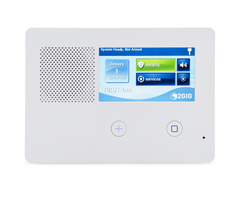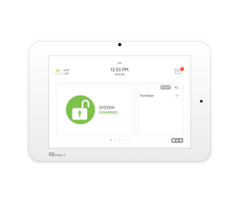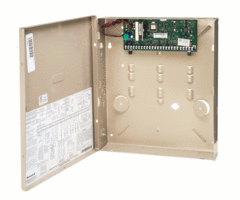The Best Alarm System for Those on a Budget
Posted By Michael GorisWe are often asked about security system options for those on a tight budget. At Alarm Grid, we believe that everyone should have access to alarm monitoring, and we try to accommodate as many people as possible. We have found that a basic starter security system can start at under $250.
 There are two main expenses you need to consider when setting up your own alarm system. There is the up-front cost of your equipment, and there is the monthly cost of alarm monitoring service. At Alarm Grid, our customers must purchase their own equipment. This is universal equipment that can work with virtually any alarm monitoring service. It is not proprietary equipment that will only work with a specific platform. If you ever want to switch monitoring companies you can easily do so. Once your system's communicator is released, it can be taken to nearly any company.
There are two main expenses you need to consider when setting up your own alarm system. There is the up-front cost of your equipment, and there is the monthly cost of alarm monitoring service. At Alarm Grid, our customers must purchase their own equipment. This is universal equipment that can work with virtually any alarm monitoring service. It is not proprietary equipment that will only work with a specific platform. If you ever want to switch monitoring companies you can easily do so. Once your system's communicator is released, it can be taken to nearly any company.
Some companies may offer you a free security system just for signing up for their service. That might sound like a great deal, but there are a couple of things to look out for. One issue is that the system they are offering might be a proprietary system. In other words, it will only work with their monitoring service. If you try to switch to a new monitoring company for any reason, you will be stuck finding new equipment. But perhaps even more concerning is that a company might lock you into a long-term contract for their services. This can make it tough to change or cancel your service.
With Alarm Grid, you own all your equipment outright. You can easily take your Alarm Grid Security System to a completely different monitoring company if desired. We will always release a communicator if requested, and we will never hold your system hostage. Additionally, all of our monitoring plans are month-to-month, and you can cancel your service before your next billing cycle to avoid paying extra. Also remember that we never change any extra or hidden fees, and there is never any additional fee for starting or stopping service.
The best way to get a low-cost security system is to consider both the up-front cost and the monthly cost. And we have a viable system option that will get you started for less than $250. We would like to recommend our Refurbished Honeywell Lyric Controller for anyone on a tight system budget. Add in a couple of VERSA-2GIG Door and Window Contacts and a Honeywell LT-Cable for powering the system, and you are still looking at a total cost of under $250. We are extremely confident in the quality of our refurbished equipment. More information can be found here.
The Lyric System is also ideal for keeping monthly monitoring costs low, as it can connect with the Reisdeo AlarmNet360 Servers through an IP-only connection. This is considerably cheaper than using cellular monitoring. However, you must understand that an internet outage will take your panel offline if you don't have cellular backup. But many users who understand the risks involved are happy to save money by going with IP monitoring. The Lyric already includes a built-in WIFI card, so you will not need to add anything to the system to do IP monitoring. And if you ever decide to upgrade to cellular monitoring later, the system has two (2) LTE options available.
Alarm Grid offers its Bronze Level Plan for just $15 per month. This plan will allow your Lyric System to connect with the Honeywell AlarmNet Servers for central station monitoring service. This is all you need to get a Certificate of Alarm for potential savings on your homeowner's insurance. You might also consider adding at least one smoke detector to your system for further savings with your homeowner's insurance. Currently the least expensive wireless smoke detector for the Lyric System is the Honeywell SiXSMOKE Smoke Detector. Another nice accessory is the Honeywell LCP500-DK Desk Mount, which will allow you to use the panel without mounting it to a wall or lying it flat on a surface.
For just $250 up-front and $15 per month, you can get central station monitoring service and a state-of-the-art security system that is perfect for building around as your budget grows. And if you lack funds up-front, then we offer financing options that we are happy to discuss. Please email us at support@alarmgrid.com if you want to learn more about our products or monitoring services. We answer emails during our regular support hours from 9am to 8pm ET M-F. We look forward to hearing from you!



















